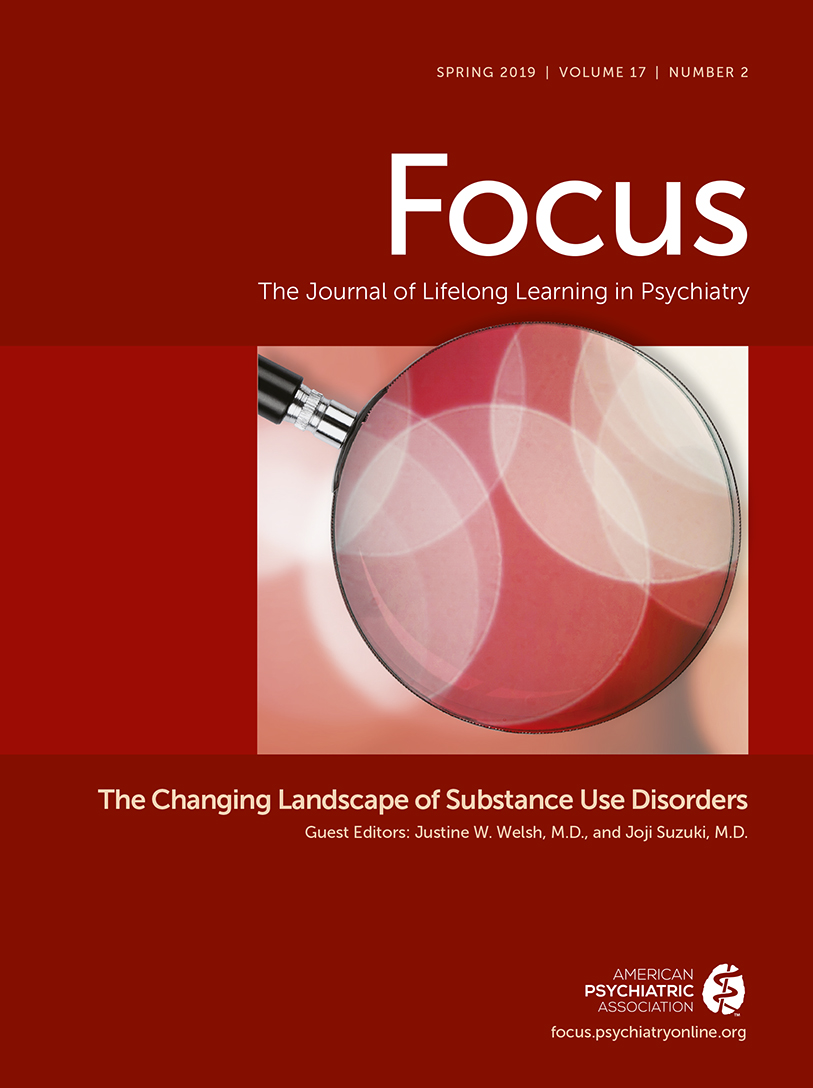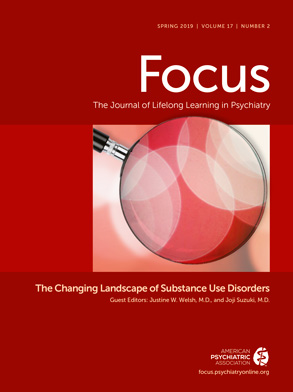Psychosocial Interventions for Cannabis Use Disorder
There is strong support in the literature and clinical practice for psychosocial interventions for the management of CUD
29,30. Most of the recent research on treatments for CUD involves either a combination of psychosocial and pharmacological interventions or pharmacological interventions alone. In the past, a number of clinical trials have explored the effectiveness of psychosocial interventions for CUD, and most studies focused on the effects of primary psychosocial interventions for CUD, such as cognitive-behavioral therapy (CBT) and motivation enhancement therapy (MET). Such interventions can be delivered individually or in groups and focus on the individual or the social environment, teaching coping strategies and problem−solving skills. In general, these psychosocial approaches for substance use disorders aim to build motivation, identify patterns of use and triggers that lead to use, and manage and promote substitution of substance-related behaviors with healthier activities
31,32.
Studies have also investigated interventions with alternative approaches for the treatment of CUD. For example, mindfulness-based meditation is a technique that aims to enhance moment awareness in order to decrease the impact of triggers that lead to cannabis use
33. Additionally, drug counseling (DC) might be offered to promote education regarding drug use and health risks and provide suggestions to help decrease the harmful effects of drug use
30.
Most studies showed that CBT and MET present similar treatment effectiveness. Studies comparing either CBT or MET with alternative psychosocial interventions consistently found that these two therapies produce the greatest reduction in cannabis use. For example, a recent study showed that a combined CBT and MET approach reduced the frequency of cannabis use more effectively when compared with either intervention alone
34. One study reported that CBT produced superior effectiveness when compared with MET
35. Finally, MET demonstrated superior outcomes compared with drug-related health education (both at 6 and 12 months)
36 and with inactive controls
37,38.
Studies show that the effects of the CBT + MET intervention are positively enhanced by contingency management (CM), a financial incentive for successful abstinence or treatment adherence. For example, CBT + MET enhanced by abstinence-based CM promoted superior results when compared with any other psychosocial approach, such as MET + CBT + adherence-based CM, CBT + adherence-based CM, abstinence-based CM alone, MET + CBT, and finally DC alone
39-41.
However, one study showed that, when delivered alone, a 12-session CBT intervention showed greater reduction in the frequency of cannabis use compared with the same CBT duration paired with abstinence-based CM or adherence-based CM over 12 months
42.
In addition, longer or more intensive interventions have been shown to be superior to shorter durations of treatment. It has been demonstrated that a nine-session MET + CBT intervention outperformed a shorter two-session counterpart for up to 15 months
36. Additionally, six-session CBT produced superior results when compared with a single CBT session in another clinical trial
25.
In summary, the best intervention for reducing the frequency of cannabis use is likely to be a MET + CBT combination enhanced by abstinence-based CM when available. In the absence of CM, MET + CBT is likely to remain effective, although improvements may not be as immediately noticeable. Although the optimum number of sessions is not clear, evidence suggests that more intensive interventions of more than four sessions are likely to be superior to less intensive interventions, at least in the short term.
Pharmacological Interventions for Cannabis Use Disorder
To date, there are no medications approved for the treatment of CUD. Human laboratory studies and clinical trials have tested multiple medications normally approved for other conditions, such as antidepressants, anxiolytics, mood stabilizers, and antiepileptic drugs
43−49. For example, the anticonvulsant gabapentin, a GABA/calcium channel modulator, reduced cannabis use and withdrawal symptoms in adults with CUD
47. In a recent meta-analysis, selective serotonin reuptake inhibitor (SSRI) anti depressants, mixed-action antidepressants, atypical antidepressants (bupropion), anxiolytics (buspirone), and norepinephrine reuptake inhibitors (atomoxetine) did not demonstrate effects that would suggest that these medications would help for CUD treatment
50.
Recently, more attention has been given to medications that might act as substitution therapy for CUD, following the same principle as methadone for the treatment of opioid use disorder or nicotine replacement therapy for tobacco dependence. The aim of agonist replacement therapy is to reduce the desire to use the drug, withdrawal symptoms, and the positive subjective and reinforcing effects that are directly mediated by receptor activation.
In the past, THC formulations have been assessed for CUD and have shown some mixed outcomes in both randomized clinical trials and laboratory studies. For example, although the CB1 agonist dronabinol has reduced cannabis withdrawal symptoms and increased retention in treatment when compared with placebo in early studies
51, dronabinol produced no greater effects than placebo when combined with lofexidine (an agonist of the α2-adrenergic receptor) for cannabis abstinence in a recent clinical trial
52.
Cannabidiol (CBD) is the second major component of marijuana and has gained high visibility for its multiple therapeutic properties. The mechanism of action of CBD at the CB1 receptor is not yet clear, but recent discussion suggests that it decreases CB1 activity probably through a negative allosteric activity without producing the side effects of inverse agonists
53,54. To date, CBD has demonstrated anti-inflammatory, anticonvulsant, antipsychotic, anxiolytic, and neuroprotective effects in pre-clinical studies; some of those effects have been confirmed in human studies. Unlike THC, CBD does not produce psychotropic effects and this is probably because of its low affinity for CB1 receptors
55−57. Studies have assessed the effects of CBD for the treatment of CUD, both alone and in a formulation combined with THC (nabiximols, Sativex). Recent studies report that the THC/CBD mixture does not elicit as much of a psychoactive effect as cannabis and, despite not eliciting greater reduction in cannabis use when compared with placebo, was able to reduce withdrawal symptoms and improve retention in treatment in both a clinical trial
58 and a human laboratory study
59. However, CBD alone was unable to reduce self-administration in a human laboratory study and did not alter the subjective and physiological effects of smoked marijuana
60.
Because the rewarding effects of cannabis are directly associated with the actions of THC on the CB1 receptors, CB1 receptor antagonists/inverse agonists also have been evaluated in human laboratory studies
61,62. However, psychiatric side effects associated with CB1 antagonists/inverse agonists, such as depression- and anxiety-like states, have been reported in several studies, leading patients to drop out of studies and discontinue treatment
63−65. The recent report that a neutral CB1 antagonist (AM4113) may retain the therapeutic potential of inverse agonists
66,67, possibly without the neuropsychiatric side effects
67, provides some development opportunities in this area.
Recently, a number of trials have evaluated N-acetylcysteine, a modulator of glutamatergic receptors, because of positive results for cannabis use cessation and subjective measures (craving) in past open-label and placebo-controlled trials among adolescents
68,69. However, its effect was not replicated in a larger clinical trial among adults, in which N-acetylcysteine and placebo groups did not differ in cannabis abstinence
70. The potential utility of N-acetylcysteine should be further evaluated in adolescents in the future.
There is currently substantial evidence that the cannabinoid system interacts with other neurotransmitters and neuromodulators. Opioid-focused medications have been considered a potential target for the treatment of CUD, since endogenous opioids play an important role in modulating the addictive properties of cannabinoids. Evidence from pre-clinical studies demonstrates that antagonists of opioid receptors were able to reduce discriminative stimulus and reinforcing effects produced by the activation of CB1 receptors
71,72. In addition, studies have shown that cannabinoids produce clear opioid-sparing effects
73.
Additionally, some studies have been conducted on the effects of naltrexone, an antagonist of the μ-opioid receptor, on cannabis use. It has been reported that the acute administration of naltrexone potentiated the positive subjective effects of cannabis but that repeated administration decreased such effects
74,75. This controversial effect dependent on the duration of treatment can be observed in other neurotransmitter systems. It has been noted that acute compared with chronic antagonism of the dopamine receptor elicits opposite effects on cocaine reinforcement in both human and non-human subjects
76.
Studies have found that a genetic variation of fatty acid amine hydrolase (FAAH), the enzyme responsible for the degradation of endocannabinoids, is associated with CUD
77,78. Among subjects who tried cannabis, those carrying a genetic variation in FAAH (C385A) were significantly less likely to develop CUD
79. The variation C385A in FAAH reduces both the enzyme’s expression and its activity
80, and FAAH expression is reduced in subjects with CUD
81. An ongoing clinical trial is further exploring the effects of PF-04457845 (a FAAH inhibitor) on cannabis withdrawal
82.
Currently, there are several clinical trials assessing psychosocial and pharmacological interventions to reduce cannabis use and withdrawal symptoms and prevent relapse. These include trials with CBD
83, nabilone
84, CI-581a (a glutamate modulator) in combination with MET and mindfulness-based relapse prevention
85, and a combination of numerous behavioral therapies (MET, CBT, CM, individualized assessment, and treatment)
86. The outcomes from these clinical trials will improve our understanding of treatments for CUD.

